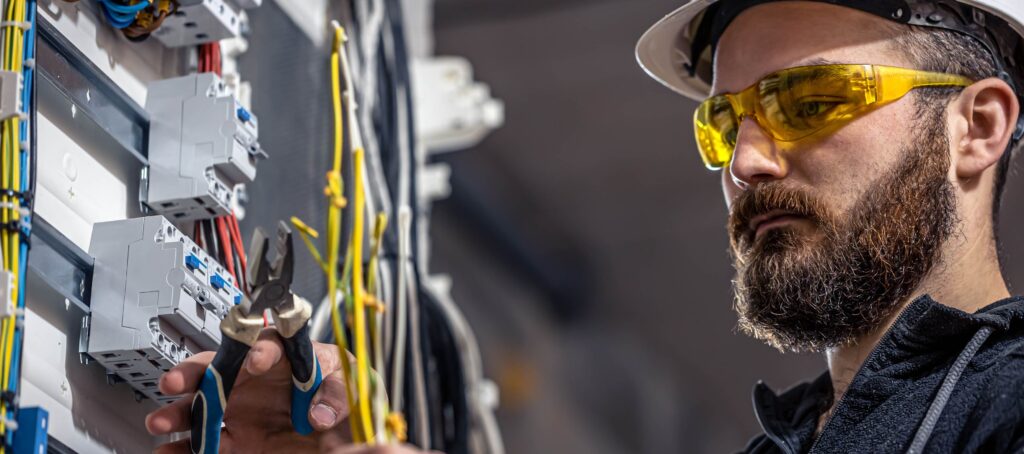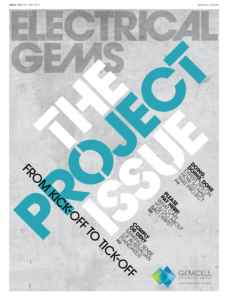Recently, we delved into the electrician skills shortage here in Australia, discovering that an estimated 42,000 new electricians will be needed in the country by 2030.
If that seems a lot of people – that’s probably because it is – however it’s far from an Australian problem.
So, we thought we’d take a look at the situation overseas too, exploring the factors that are leading to a sparkie shortage, and – more importantly – looking at the initiatives different countries are undertaking to attract and train more electricians than ever before.
What’s causing the global electrician shortage?
It’s pretty simple really – people retiring combined with increasing demand for electricians with specialised skills, including working in renewable energy.
We take a look at what’s happening in the US, UK, Canada, and New Zealand, and check out the differences in approach to plugging any gaps that are emerging.
The United States: A looming economic threat
The numbers: There are almost 820,000 people employed as electricians in the US, and The U.S. Bureau of Labor Statistics projects that the sector’s going to grow by 11% by 2034 – meaning there are going to be around an extra 77,400 jobs in the next ten years. It’s one of the country’s fastest growing professions, however, with around 10,000 retirements each year (almost 30% of union electricians are at or near retirement age) and 7000 new entrants, things could soon look rather precarious.
The solutions: One notable solution is the apprenticeship-only certification model being adopted in some states, like Washington. There are also targeted programs to help military veterans transition into electrical careers, and some states are using pre-apprenticeship programs to give potential sparkies a taste of the trade.
For those who are keen, it’s also a gig that pays pretty well, with some electricians earning over US$100,000 (AU$150,000) annually.
The United Kingdom: Slowing down ambitions
The numbers: The UK’s shortage of electricians is directly impacting its housing construction goals, with an estimated 15,000 new qualified electricians needed within the next five years to meet construction growth alone. At present, more than 44% of the ‘Repair, Maintenance, and Improvement’ workforce – which includes electricians – is aged 55 or older, meaning there’s a huge change in the makeup of the profession coming in the UK.
The solutions: The UK is investing in its training infrastructure with plans for new technical excellence colleges. Their Apprenticeship Levy, which was designed to raise funds to subsidise apprenticeships has raised more money than has been allocated for spending – meaning the system’s not effectively converting funds to training opportunities. In addition, between 2017 and 2022, apprenticeship completions fell from 55% to 35%. This led to a policy change in April to remove the 5% contribution for small employers. More recent data, however, shows apprenticeships picking up, with an 8% growth in the 2024/25 academic year. The UK is also focusing on upskilling its existing workforce to handle new technologies like heat pumps and EV chargers.
Canada: Skilled immigration plus apprentices to plug gaps
The numbers: While the overall labour market has stabilised in Canada, the electrician sector still faces what is described as a “moderate risk of labour shortage”. Retirement is a massive factor here, too – accounting for more than 75% of all job openings – while in one quarter in 2022 there were more than 5,000 job vacancies for construction electricians – 27% of them were available for more than four months.
The solutions: Canada has taken the skilled migration route to plug those gaps – with the number of non-permanent residents in the trades workforce more than doubling between 2016 and 2021. To supplement this, and to get a new pipeline of homegrown sparkies in town, federal and provincial governments are pumping cash into new apprenticeship seats, addressing “cumbersome recruitment processes” and tight ratio restrictions that previously limited the number of apprentices an employer could sponsor.
New Zealand: Domestic solutions prioritised
The numbers: New Zealand also faces a long-term skills shortage, with a quarter of its electrical workforce aged 55 or older, and the current pipeline of new entrants insufficient to even cover the number of people expected to retire – never mind build capacity for anticipated increases in work. Recent data shows that there are currently 9,060 electrical programme learners.
The solutions: The country has a domestic-first strategy, having closed its Long Term Skill Shortage List Work Visa for electricians in 2021, which shifts the entire challenge of workforce replacement onto local training and recruitment efforts. For the best part of 10 years there’s been an intermittent PR push too, actively promoting the trades as a “future-proof” career choice to challenge some perhaps dated opinions. Master Electricians are urging schools and parents to promote the trades as a viable option for young people.
Subscribe to Electrical Gems
Featuring topical issues in the industry, product reviews and emerging trends in local markets.

















































































